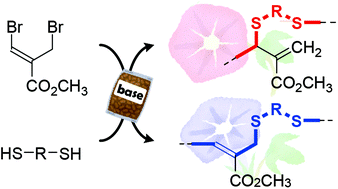Divergence of polycondensation by a tandem reaction based on sequential conjugate substitutions†
Abstract
Polycondensation, which was based on sequential conjugate substitution (SN2′) reactions of β-bromo-α-(bromomethyl)acrylates and dithiol, afforded diverse structures of polysulfides with exo- and endo-olefin units. The polymer structure was controlled by choosing bases with different nucleophilicities to tune glass transition temperatures.



 Please wait while we load your content...
Please wait while we load your content...